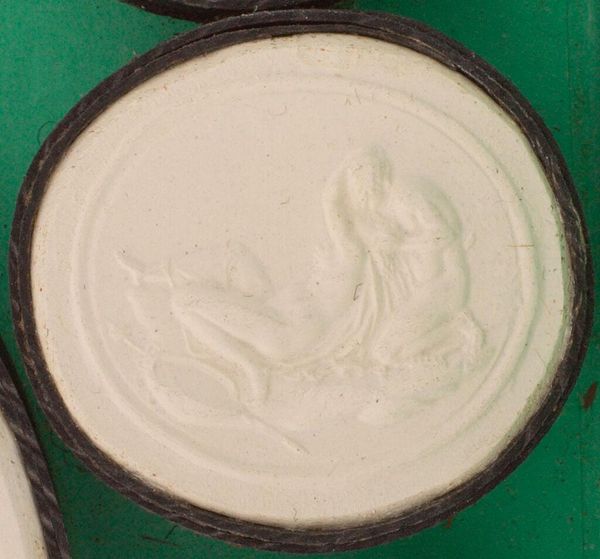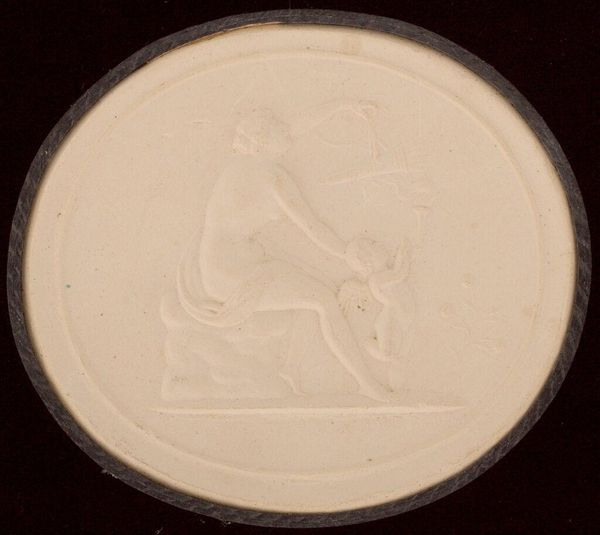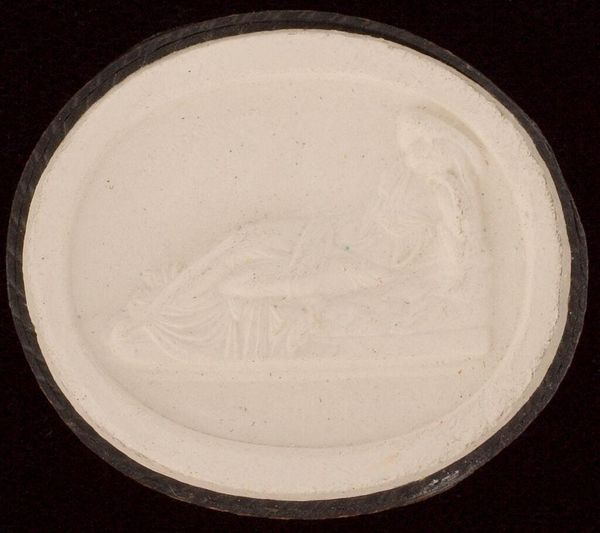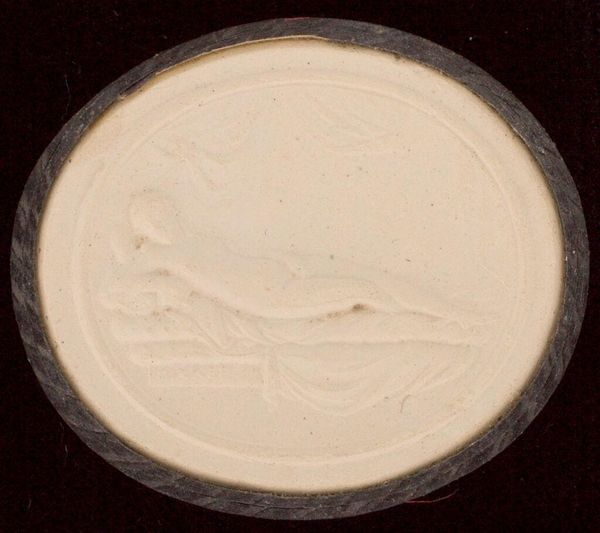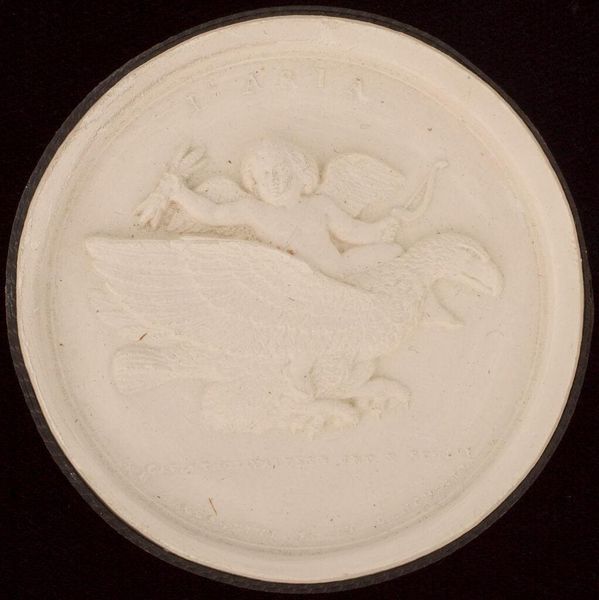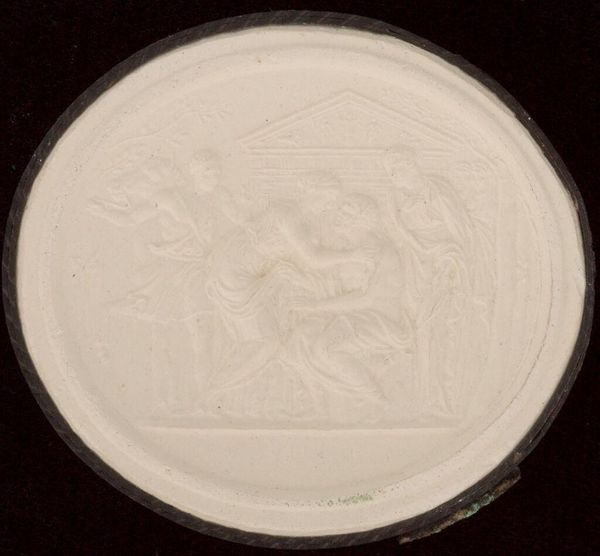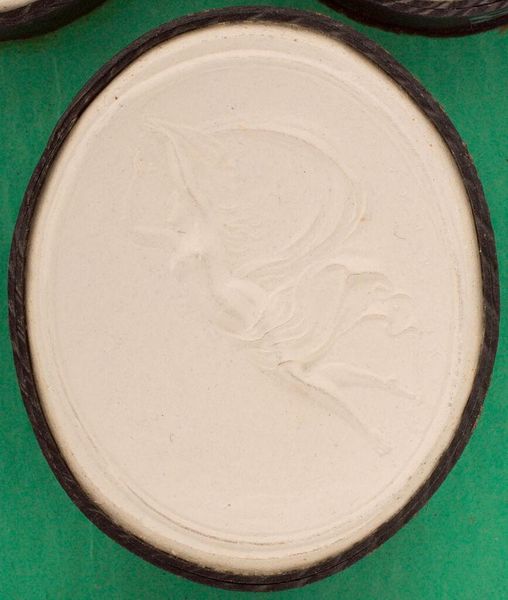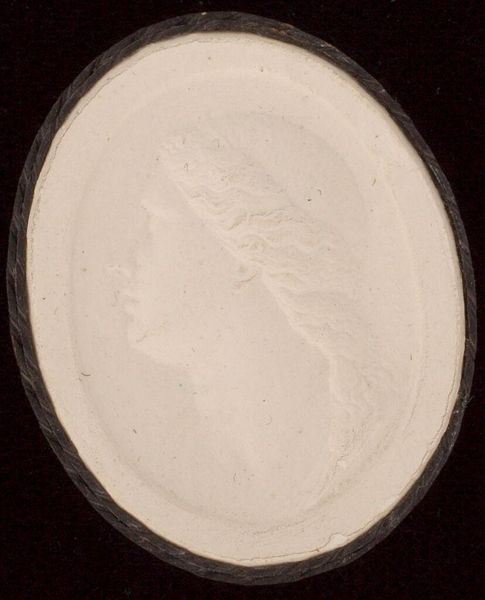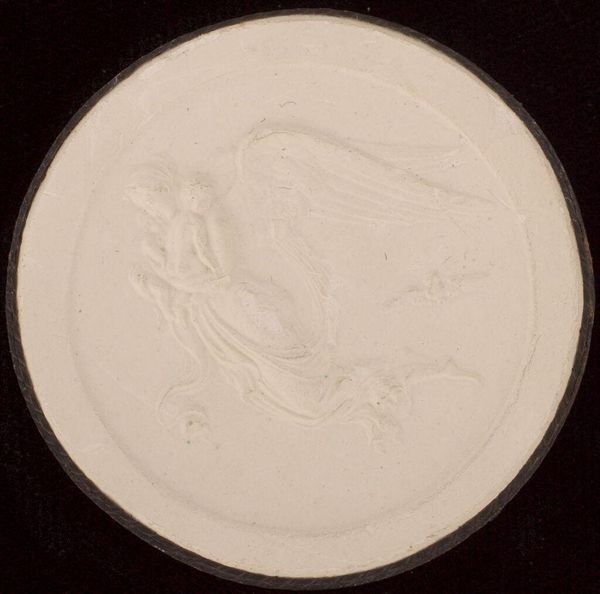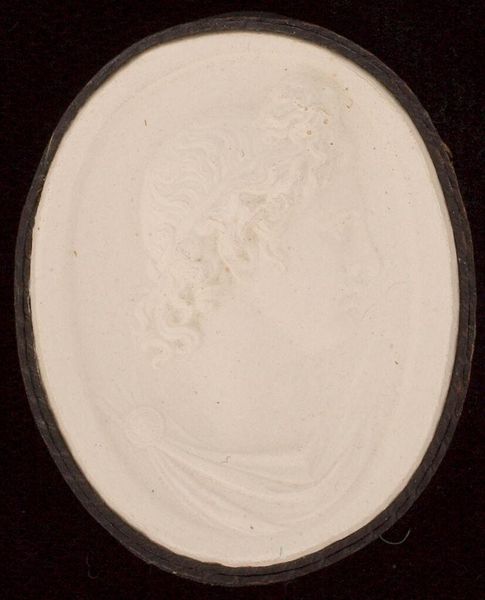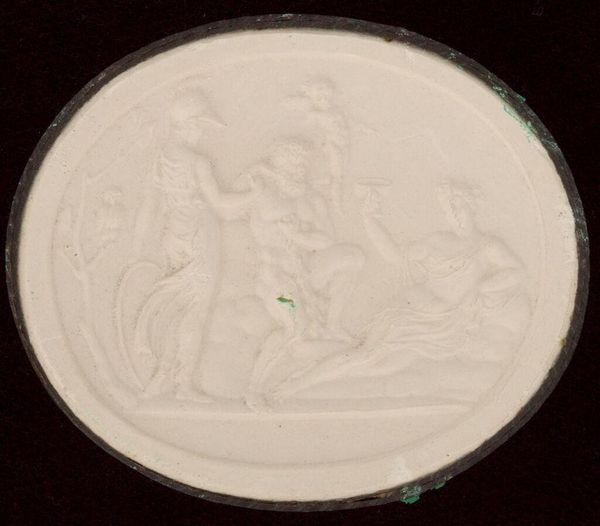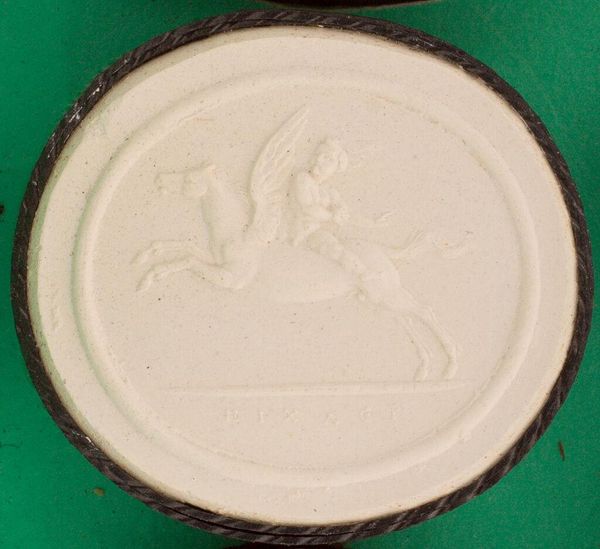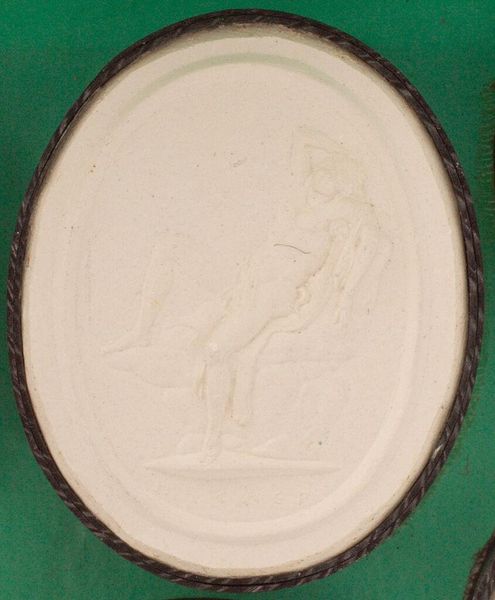
Dimensions: 2.9 x 3.2 x 1 cm (1 1/8 x 1 1/4 x 3/8 in.)
Copyright: CC0 1.0
Curator: Here we have a fascinating piece attributed to the Pichler family, "Cupid on Pegasus, after antiquity," held at the Harvard Art Museums. Editor: It's striking how the stark white cameo evokes a sense of classical purity, but also feels incredibly fragile given its size. Curator: Indeed, the piece is small, only about 3 centimeters in its largest dimension. Considering the historical context, the Pichler family was known for their intricate gem engravings. This work engages with the widespread Neoclassical fascination with antiquity. Editor: So, the craftsmanship is part of the message here; the meticulous carving in such a compact space would have been a testament to both the artist's skill and the patron's wealth. Curator: Precisely. Replicating and reinterpreting classical motifs like Cupid and Pegasus also positioned the owner within a lineage of cultural sophistication and power. Editor: It makes you wonder about the labour and the social standing of the artist, and how the circulation of the piece cemented social hierarchies through its consumption. Curator: A crucial point. The image becomes a symbol of cultural capital, beyond its mere aesthetic appeal. Editor: It's interesting to consider how such a diminutive object can reveal so much about power, skill, and historical reverence. Curator: It certainly offers a glimpse into the world of artistic production and social ambition.
Comments
No comments
Be the first to comment and join the conversation on the ultimate creative platform.
